INDIAN ARMED FORCES CHIEFS ON OUR RELENTLESS AND FOCUSED PUBLISHING EFFORTS

The insightful articles, inspiring narrations and analytical perspectives presented by the Editorial Team, establish an alluring connect with the reader. My compliments and best wishes to SP Guide Publications.

"Over the past 60 years, the growth of SP Guide Publications has mirrored the rising stature of Indian Navy. Its well-researched and informative magazines on Defence and Aerospace sector have served to shape an educated opinion of our military personnel, policy makers and the public alike. I wish SP's Publication team continued success, fair winds and following seas in all future endeavour!"

Since, its inception in 1964, SP Guide Publications has consistently demonstrated commitment to high-quality journalism in the aerospace and defence sectors, earning a well-deserved reputation as Asia's largest media house in this domain. I wish SP Guide Publications continued success in its pursuit of excellence.
- Indian Air Force Aims for Full Indigenous Inventory by 2047 — Air Chief Marshal A.P. Singh
- Rajnath Singh assumes charge as Defence Minister for the second consecutive term
- Interim Defence Budget 2024-25 — An Analysis
- Union Defence budget 2024
- Prime Minister Modi Flies in the LCA Tejas
- New Chapter in India-Italy Defence Ties
- Airpower beyond Boundaries
Aerospace & Defence – Capability Roadmap 2030 Conclave
India's Defence Sector Forges Path to Global Innovation Hub in Aerospace and Defence
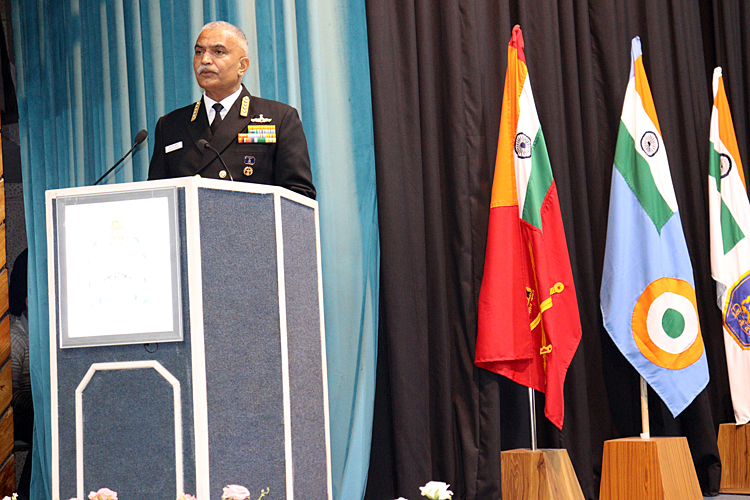
The United Services Institution of India- Centre for Atmanirbhar Bharat (C-ANB), in collaboration with Strategic Insights (Manish Kumar Jha), successfully concluded a landmark Conclave on February 15, 2024, at the prestigious USI premises. This Conclave served as a pivotal platform bringing together distinguished leaders from India's political, military, industrial, and technology sectors, along with participation from industry experts representing friendly foreign nations, marking it as a truly international affair.
Under the theme of "Shaping India's Future in Defence Innovation," the conclave focused on critical issues surrounding the development of advanced and futuristic technologies within India's Aerospace and Defence (A&D) sector. With a primary emphasis on policy thrust and research & development (R&D) initiatives, the event aimed to chart a course for India to emerge as a global hub for innovation in this crucial sector.
Key insights and commitments emerged from the conclave:
Manish Kumar Jha, Editor of USI and Strategic Insights, in his opening remarks, highlighted the ecosystem's focus on military modernization through indigenisation, emphasising collaboration with private sector OEMs and global partners to bolster capabilities for the Indian Armed Forces.
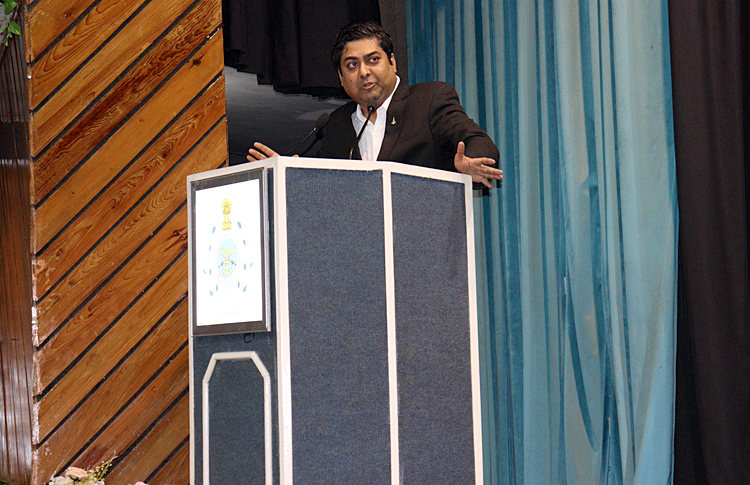
Major General B.K. Sharma, Director General of USI, in his opening address, stressed the significance of tech advancement to transform the Indian Armed Forces into a tech-empowered, future-ready force.
Major General Dr Pawan Anand (Retd), Director, C-ANB, in his introductory remarks highlighted the objective of the conclave is to set the agenda for defence capabilities, address challenges, and explore opportunities within India's defence ecosystem.
Admiral Hari Kumar, Chief of the Naval Staff, in his inaugural speech,underscored the importance of collaborations in leveraging technological opportunities, aiming for an Atmanirbhar Navy and transitioning from a 'buyer's navy' to a 'builder's navy.'
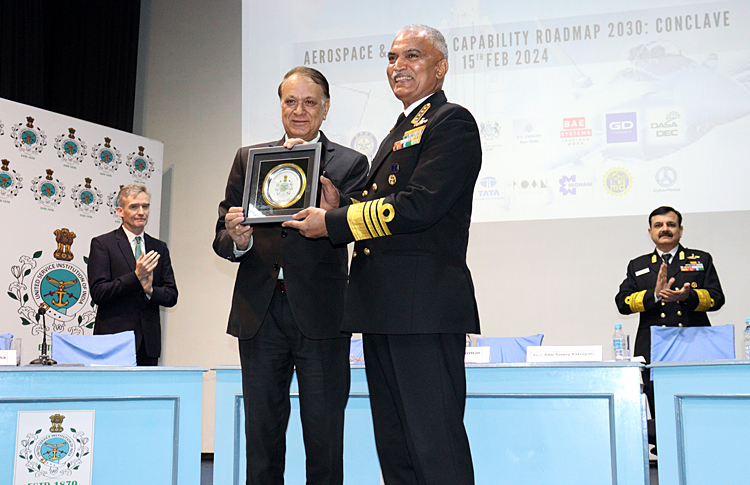
- The 21st century has shown the transition from a contested present to an uncertain future.
- Ongoing conflict is a case of how war affects economics and the interconnected nature of the world, with more than 50,000 volunteers worldwide.
- Today’s world is a tapestry of hybrid threats and the blurring of lines between traditional and non-traditional warfare.
- The future has always been difficult to predict. Challenges, born out of the growth in scope, scale and depth of tech development.
- The role and importance of tech in security calculus have been increasing day by day. The trend is likely to continue in the future.
- Current and future paradigms, the proliferation of sensitive tech and the asymmetric advantages it gives is an area of focus and concern.
- The Navy will not hesitate to deploy a full spectrum of capabilities to ensure it can preserve the integrity of the armed forces, while also showcasing the abilities of the Armed Forces.
- Like every challenge, tech development also comes with opportunities. Collaboration is a key element of these opportunities.
- Two imperatives: a whole of nation approach and a whole-of-society approach (internal) and likeminded nations collaborating where feasible and where interests align (external).
- Indian tech is used in conflicts across the world, and foreign partners also see the pace of development and capability of the tech made in India.
- One of the key pillars of Atmanirbharta is the induction and growth of a fully self-reliant defence industry.
- Not just an economic imperative, but a strategic necessity.
- The Navy has committed to becoming a post-future, Atmanirbhar Navy in the coming years, by the time the Navy turns 100. Move from a ‘buyer’s navy’ to a ‘builder’s navy’.
- Innovation, indigenisation, and integration of present and future tech are the key pillars of this commitment.
- Possible through the coming together of the private sector, ship-building enterprises, and other elements.
- The Indian defence industry boasts a thriving startup environment, lots of tech expertise, quality education institutions.
- Three-tier organisation under the NIIO created and sustained efforts being undertaken, giving a focused effort towards indigenous tech development.
- More than 30,000 products indigenised.
- “We must change or pay an increasing price for remaining the same”
- For the navy, transformation is a continuous process, with indigenous development taking centre stage.
- Multi-faceted approach to ensure multiple avenues of development are explored and harnessed simultaneously.
- Safeguarding maritime interests will necessitate a maritime force capable of operating across continents and domains, while also having a future-proof outlook.
- Sensors and Weapons (kinetic and non-kinetic options), Platforms (carriers and nuclear subs, etc), EW (having on board platforms), Cyber (leveraging AI for real-time threat detection and response), Tech Revolution (RMA and AI-based solutions) and Unmanned systems (drones, swarm)
- All with a focus on self-reliance for giving a boost to the development of the nation.
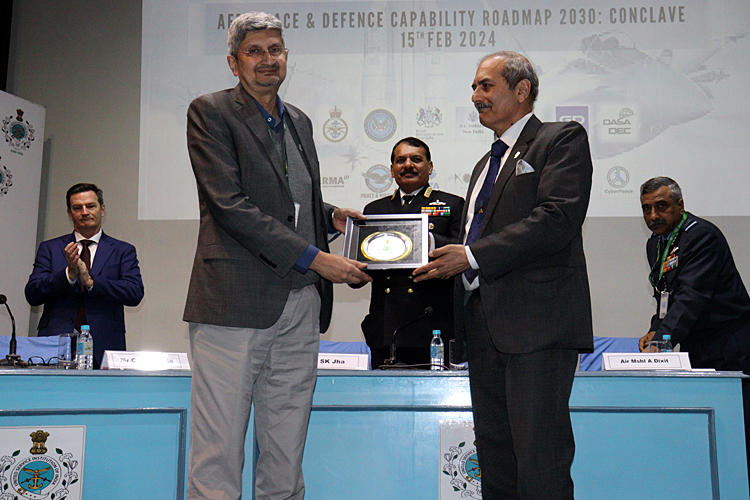
Vice Admiral Dinesh Tripathi, Vice Chief of Naval Staff in his keynote address said: Tech is driving the nature of warfare at an unprecedented pace, in unimagined areas.
- The world is, geopolitically and militarily, in tech and tactics, in a state of flux. The last couple of years have made this flux more intense.
- India believes Atmanirbharta is a strategic necessity to navigate this flux.
Air Marshal Ashutosh Dixit, Deputy Chief of the Air Staff, IAF in his keynote address highlighted that the government working in the inculcation of an atmosphere to develop deep and niche tech within the nation. Many programs are being instituted for this to happen.
- IAF developing both the tech indigenously, along with the platforms (helicopters, aircraft, etc) on which they will be running.
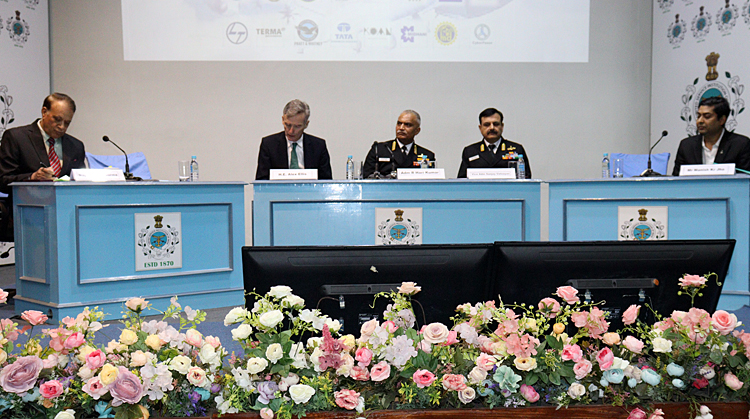
Major General C.S. Mann, ADG, Army Design Bureau (ADB) elaborated on the tech transformation roadmap of 2030, said: “The road to make India a tech-enabled, self-reliant future ready force, capable of operating in multidomain environments, as part of the India Tech Vision of 2047.”
- Domains of tech transformations: Logistics, fire delivery, communication, computing, surveillance and sensors -- Stealth tech: both passive and offensive.
Alex Ellis, High Commissioner, UK High Commission remarked: Europe is seeing an age of turbulence. USSR’s fall and end of the Cold War brought about a lot of optimism, but the era is over. The worldwide era of turbulence.
- India is one of the only nations which is able to seize the opportunities provided by said age of turbulence.
- Speed and adaptation at local levels, creation of trust and capabilities are major challenges for the Armed Forces of any nation.
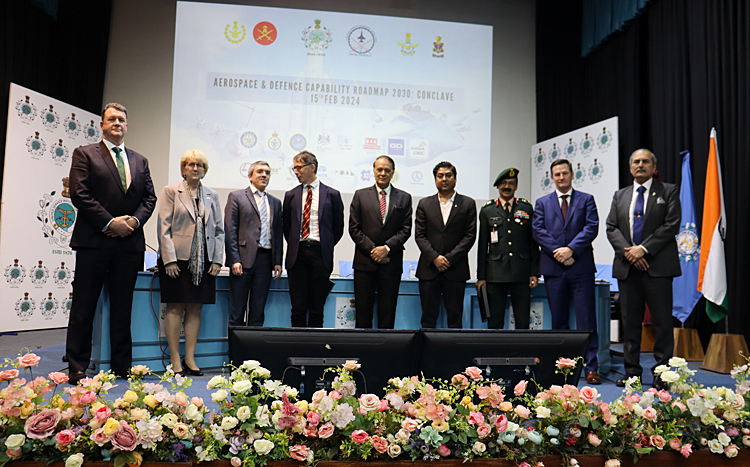
Dr. Samir Kamat, Secretary DDR&D and Chairman Defence Research and Development Organisation (DRDO), highlighted DRDO's shift towards a development-cum-production approach, fostering partnerships with the private sector from the design stage, and expanding the R&D ecosystem through initiatives like the Technology and Development Fund.
- Space-based surveillance is ISRO’s domain. However, some avenues such as Hyperspectral imaging, ELINT, etc. are ones where ISRO and DRDO are collaborating.
- Any adversary in the future will first target your space-based assets before any other wartime move, to blind the nation from the sky, before moving in.
Sandy Long, Senior Advisor for Defence Exports, DASA(DE&C) in her keynote address explained the capability of Stryker systems, such as striker security, low light visibility systems, and constant connectivity to the system have been the core focus of the development of the striker systems.
- Continuous development to keep pace with tech development and the changing battlefield has been the core focus of the development of the system.
- Striker systems proof of US commitment towards continuous tech development in the military domain.
- Drawbacks in the FMS systems seen by both India and the US.
- America looking at reforms, with the OSD office coming up with more than 80 ways in which improvements can be made and implemented.

Shimon Fhima, Director of Strategic Defence Capability, MoD, UK emphasized the need for continuous investment to address evolving threats, advocating for alliances and partnerships to foster a conducive environment for foreign players in India's tech landscape.
Chris Hastie, CD General Dynamics Land Systems said: Foreign collaboration with ‘Make in India’ is a new concept for foreign players which needs ideation. Foreign players are eager to collaborate in any case.
- Make-in-India policies are not unique. Many nations have similar policies for their economies. Foreign players can work within these frameworks.
The conclave concluded with remarks from Colonel Ravinder Kumar Sharma (Retd), C-ANB, USI, with a consensus on the imperative need for concerted efforts in research, development, and collaboration to ensure India's readiness in the face of emerging challenges and opportunities in the Aerospace and Defence sector.





